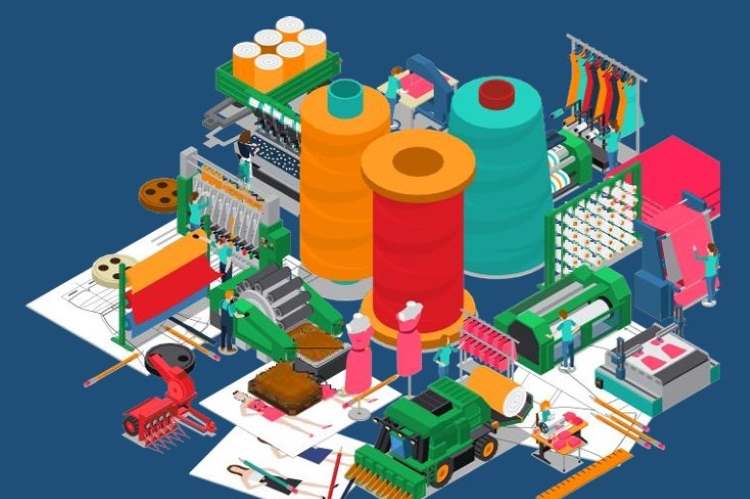The technical textiles industry is on the brink of remarkable growth, with projections placing the global market size at an impressive $309 billion by 2047. India’s position in this expanding sector is pivotal, given its status as one of the world’s largest textile producers. In 2021-22, India held a 4% share of global textile and apparel trade, with these products contributing 10.33% to India’s overall export basket. However, India’s path forward must balance trade policy, sustainability, and industry growth, presenting both opportunities and challenges.
Trade tariffs play a significant role in shaping the technical textiles market, with India’s tariffs currently ranging between 20% and 40% on imported goods. This tariff structure reflects India’s strategy to protect its domestic industries, supporting growth in technical textiles by reducing foreign competition.
READ I Trump 2.0: India’s strategic gains and economic challenges
Impact of tariffs on technical textiles industry
While tariffs can shield local industries, they also present challenges in an interconnected global market. High tariffs on raw materials, for instance, can raise production costs, making Indian products less competitive abroad. Conversely, lower tariffs may allow cheaper imports to flood the market, potentially harming domestic producers.
According to the Ministry of Textiles, India’s technical textile market was valued at approximately $19 billion in 2021, with an expected annual growth rate of 15-20%. This data highlights the need for a balanced tariff policy that promotes growth while maintaining competitive sustainability.
Sustainability challenges in textile industry
Sustainability has become a core concern for the textile industry, especially in technical textiles that require complex manufacturing processes. In India, the shift towards sustainable practices is accelerating, yet significant obstacles persist.
Sustainability in technical textiles involves minimising environmental impact throughout the product lifecycle—from sourcing to disposal. However, India’s reliance on imported materials complicates these efforts. The country’s high import-to-export ratio raises both economic and environmental concerns, as importing large quantities of raw materials contributes to resource strain and pollution.
The textile sector in India is also one of the largest polluters, particularly regarding water and chemical usage, accounting for around 20% of global water waste. Addressing these issues is essential for sustainable growth.
Cooperative federalism and sustainability
Cooperative federalism, where multiple levels of government collaborate on policy implementation, is emerging as a strategic framework for India’s trade and sustainability efforts. By aligning policies across federal, state, and local levels, India can support both economic growth and environmental sustainability in technical textiles.
In this context, cooperative federalism can enable incentives for sustainable practices. State governments, for example, could provide tax breaks to manufacturers meeting environmental standards. Such incentives, combined with favorable trade terms for sustainable products, would strengthen India’s position in the global market.
Union Textiles Minister Smriti Irani highlighted cooperative federalism during the Textiles India 2017 event, referring to the Goods and Services Tax (GST) as a landmark in national tax reform. The GST rollout, a unified effort among state and central governments, created a smooth transition for the textile industry. This example underscores the potential of cooperative federalism to streamline reforms, especially those involving sustainability.
Sustainability as a competitive advantage
Sustainability has evolved from a trend to a competitive advantage in the global market. For India, this means crafting trade policies that not only drive growth but also emphasise sustainable practices within the textile industry.
By prioritising sustainability, India can unlock the potential of its technical textiles market without compromising environmental health. Such an approach would bolster India’s image as a responsible global player and create new opportunities in markets favoring eco-friendly products.
The SusTex project exemplifies India’s push for sustainable growth in textiles. This initiative promotes less-polluting, resource-efficient production processes within the crafts and textile industries. The project’s model eco-friendly textile park showcases sustainable production practices and serves as a model for other textile parks. This effort unites technical service providers, producer groups, and SMEs to conduct research on low-cost, pollution-reducing technologies.
India’s technical textiles sector stands on the verge of significant growth, with exports in the textiles and garments industry projected to reach $300 billion by 2024. Achieving this growth sustainably, however, will require careful consideration of trade tariffs, cooperative federalism, and international relations, particularly with countries like the U.S. Aligning economic development with environmental stewardship can ensure a prosperous and sustainable future for India’s technical textiles industry.
India’s emergence as the third-largest consumer market and the fifth-largest textile exporter highlights the importance of sustainable growth strategies. By fostering resilience in trade policy and sustainability, India can secure its position as a global leader in technical textiles.
(Ilina Jha is Research Associate with Infinite Sum Modeling.)

